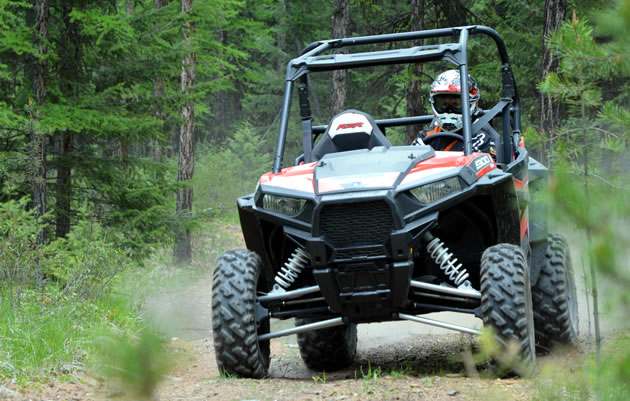Crush bad habits, not cans, on the trail
ATVers in B.C. can work together to make drinking and riding a thing of the past.
RIDERSWEST
by Kirsten Armleder |

ATVBC and its member clubs promote safe and responsible riding. — Kirsten Armleder photo
Spring is right around the corner, which means a new ATVing season in B.C. is about to begin. It is time then to broach a subject that’s been in hibernation for the last three or so months—drinking and riding.
Haven’t we been over this before—is it still a problem? Well, consider this: the British Columbia Coroners Service reports that from 2006 to 2015, there were 132 accidental ATV deaths in the province. Alcohol and/or drug use was determined to be a contributing factor in 56.6 per cent of these cases.
More recently, the Trauma Services team at Interior Health—which is the publicly funded health care provider for B.C.—conducted research on the nature of injuries related to ATV incidents that occurred within Interior Health’s service area between 2006 and 2016. Out of the 388 trauma admissions that were attributed to ATV injuries, there were six documented in-hospital deaths and 40 deaths at the scene. Alcohol and/or drugs were felt to a contributing factor in 55 per cent of pre-hospital deaths. The team also discovered that nearly 40 per cent of documented injuries reported no helmet used by the rider.
Facts and figures aside, no one can deny drinking slows your reaction time and impairs your ability to make decisions. Over the years, the organization that represents ATVers on a provincial level in B.C. has worked diligently to address the issue.
“On both safety training courses (the CASI ATV RiderCourse and the Canadian Safety Council ATV Rider Course), we teach how drugs and alcohol affect your judgement to make proper decisions,” said Ralph Matthews, vice-president and safety co-ordinator for ATVBC. “At all ATVBC events, we stress zero tolerance of both while riding on the trail. Save it for the end of the day.”
ATVBC also stresses the importance of wearing a helmet.
“At all ATVBC events, the wearing of an approved safety helmet is mandatory,” said Matthews.
By law, ATVers in B.C. are required to wear an approved safety helmet while operating on public land. This law applies to those riding UTVs or side-by-sides as well.
Let’s talk about side-by-sides for a moment. Equipped with car-like driving features, seatbelts and roll bars, they can give the false impression of added safety. Side-by-sides are powerful vehicles, however, and they have a high centre of gravity so rollovers and crashes can and do occur.
Speed can easily come into play, especially in the sportier models, which tout state-of-the-art suspension systems and upwards of 110-horsepower engines. It is imperative, then, for the operator to know his or her vehicle’s handling capabilities and take it easy when the conditions are not favourable. As with a car, if there are passengers present, the operator is responsible for their safety as well.

The helmet law applies to side-by-side riders as well, and if the vehicle comes from the manufacturer with a seatbelt, it must be worn when riding on public land. — Monte Smith photo
Reaching the 10 per cent
Often, it has been said that 90 per cent of all ATVers out there are safe, responsible backcountry users. So what about the remaining 10 per cent who ruin it for the rest of the user group—how can we reach them without being labelled the fun police?
According to Matthews, being an advocate for safety takes discernment. For example, when approaching someone who isn’t wearing a helmet, Matthews said, the best way is to be as non-confrontational as possible. Inform them that is it now mandatory to wear a helmet. If a deeper discussion ensues, help them to see the bigger picture—for the decisions we make today impact the riding opportunities we’ll have tomorrow.
